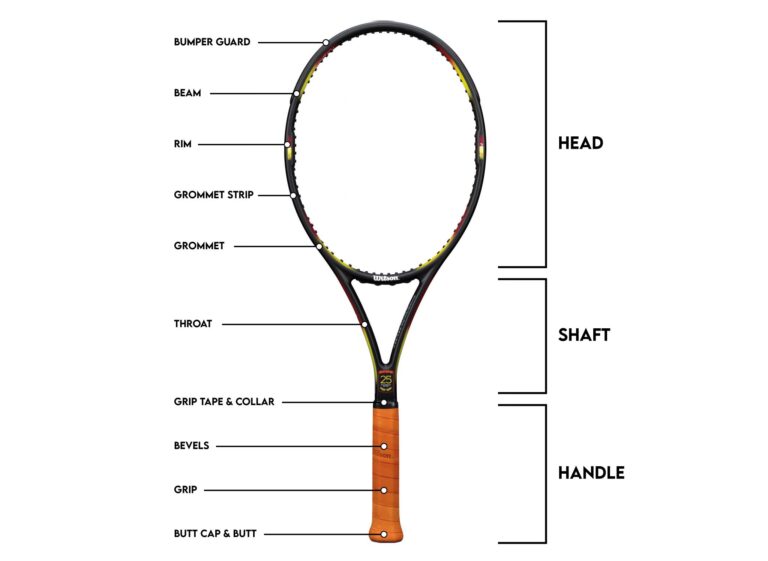Considering starting a tennis ladder at your club? This guide contains everything you’ll need to get the ladder up and running, including which tennis ladder software is available and how you can set your own one up for free.
What is a Tennis Ladder system?
A tennis ladder works very much like a league table. Players are ranked based on their ability and, once the ladder competition begins, will be able to challenge each other. Players battle their way to the top by challenging players above them in the rankings. If they win, the will either trade place with their opponent or move above them in the rankings table.
The beauty of a tennis ladder is that it allows players of a similar ability to challenge one another and also challenge better players as they improve and move up the rankings.
How To Run A Tennis Ladder Competition At Your Club
Here’s an easy-to-follow, step-by-step guide to setting up a tennis ladder competition at your own club:
1. Find Out Who Wants To Play
Start by creating a list of all the players at your club who would be interested in playing in your ladder competition and would like to regularly take part in matches. Ideally, you should also get contact details for each player, usually a phone number will do.
2. Assign a Ladder Admin
There will be lots of scores to keep track of so you’ll want to assign a tennis ladder admin. This is going to be the person in charge of handling match results, updating the ladder table and rankings and generally making sure the whole thing runs smoothly.
3. Determine the Scoring System & Format
Next, you’ll want to establish the format and rules for your ladder competition. Here are they key rules you’ll want to set out:
- Ladder Type: Singles or Doubles?
- Categories: Is it a mixed ladder with all genders and abilities, or do you have enough members to set up separate ladders?
- Match Scoring: Best of three tie-break sets works best, with a Championship tie-break (to 10 points) in place of a third and deciding set.
- Challenges: How many positions above can players challenge? If challenged, how long does a player have to arrange a date and play the match? After a challenge, how long will the challenger have to wait before being able to challenge the same person again?
- Reporting Results: Do you want results to be posted publicly or sent to an admin privately?
- Position Changes: If a challenge is successful, does the winner switch places with the loser, or do they simply slot in above them?
- Penalties: What happens if a player can’t agree to a date? Is the challenger awarded a Walkover?
- Timescale: How long will the ladder go on for? Set a start and end date.
4. Rank the Players
You’ll want to assign each player an initial ranking and put them all in order. It can be a tricky task to rank your players with upsetting someone, so we’d suggest making it a collective decision by asking several people to come up with a predicted ranking. At the end of the day, the rankings table will even itself out pretty quickly once players start challenging each other.
5. Set up the Ladder using a Tennis Ladder Platform or Spreadsheet
Now that you know the format and who is going to be playing, you can actually set up you tennis ladder. There are a couple ways of doing this and it very much depends on you and your club.
Most importantly, you’ll have to choose whether you want to use a tennis ladder software, which you’ll have to pay for, or if you want to set it up for free using a simple tennis ladder spreadsheet.
Tennis Ladder Spreadsheet (including Free Template)
You can set up a tennis ladder using a simple spreadsheet on Google Sheets. It’s completely free and doesn’t really involve too much admin work. To get you started, we’ve put together a basic tennis ladder template which is quick and easy to use. Here’s how:
- Make sure you are signed into your Google account (or set one up for free).
- Open our Tennis Ladder Template.
- Go to File > Make a copy (This will save a copy of the document on your Google Drive).
- In the first Tab (Ladder), add the names and contact details for each of the players.
- To rearrange them, simply select a row and drag into position.
- In the second tab (Results), you can keep a record of the results by inputting the player names, score and overall result.
- To share the sheet, go to Share> Copy Link (by default, the permissions should be set to ‘anyone with the link can view’).
- You can then share the link with your players using a social group.
Tennis Ladder Software
Alternatively, there are plenty of sites offering tennis ladder software for a fee. They do make things a little easier, though they still require a fair bit of input from your end. You’ll still need an admin to keep on top of things and it involves each member making an account on the platform, as well as submitting results themselves. Essentially, it shifts some of the work of your admin onto the players, but at a cost.
That being said, here are a couple of options for you to consider:
6. Share & Play!
And that’s it. Your tennis ladder is now up and running and ready to be shared with the players!
The easiest way of sharing the ladder with players is either using a WhatsApp group or a private Facebook group. It’s a great way of keeping players involved and up to date on all of the results, as well allowing them to easily challenge each other.
Personally, we’ve been using a WhatsApp group at our local club for some time now and have had no issues so far. Simply set one up, add all the players to the group and add the link to your ladder spreadsheet and rules to the group description. Then, let everyone know how to access the ladder table, challenge other players and submit scores.
Tip: you can also go ahead and send out an email to all club members to let them know that the ladder competition has started and to contact the admin if they would like to join. More members are likely to join once they see it up and running!
7. Keep Track of Results & Update the Ladder Table
As the scores come in, you (or your admin) will want to keep a record of the results and update the rankings on the table as needed by simply dragging and dropping the player names into position. And the benefit of using a Google Spreadsheet is that you won’t need to post a new version of the ladder table every time you update it!
9. Review the Ladder
At the end of the season or competition, be sure to review your tennis ladder. Ask players for feedback and figure out if you need to make any tweaks to the ladder, or if it can stay the same. If you do happen to make changes, be sure to notify the players so they are all aware of the new rules when the competition starts again.
For example: you may find that allowing players to challenge 3 places above isn’t enough as it doesn’t allow players to climb up the rankings quick enough. In that case, you could consider changing it to 5 positions.
8. Setup Prizes for the Winners
While it’s optional, we’d strongly suggest offering prizes to the winners. It’s a fantastic way of keeping players motivated and interested in the tennis ladder. Knowing there is a prize at the end of it really encourages players to play regularly, which is probably your main goal.
Naturally, you’ll want to have a prize for the winner, but we’d also recommend setting up other awards. Personally, we’ve found success in awarding the player that plays the most matches as it’s a great way to keep lower ranked players interested too!
Share the overall results on social media and make members aware of the winners. You may even want to host a trophy/award presentation ceremony. As for the actual prizes, they can be anything from a trophy to tennis gifts!
And that’s it, you now have a tennis ladder set up at you club. Hopefully, your players will be itching to jump on court and battle their way to the top of the rankings. Be sure to let us know how you get on and if you have any suggestions of your own!




